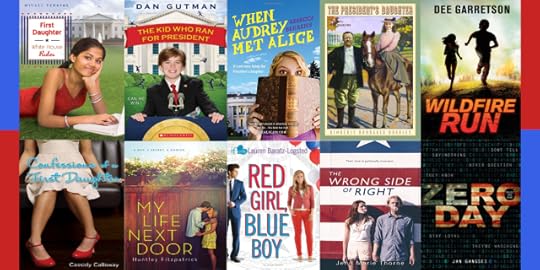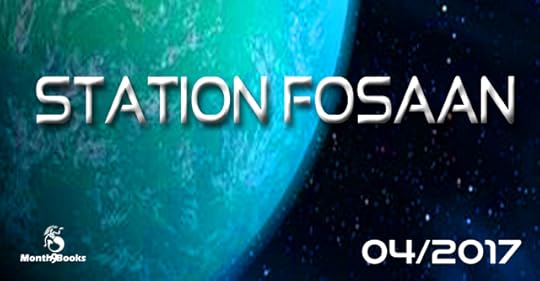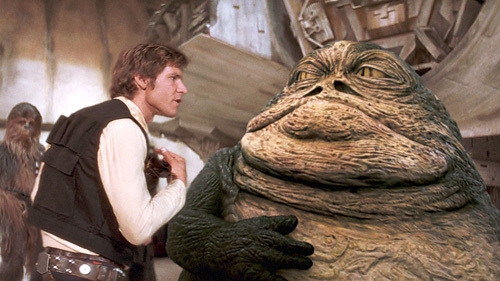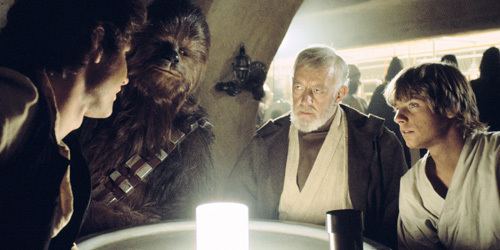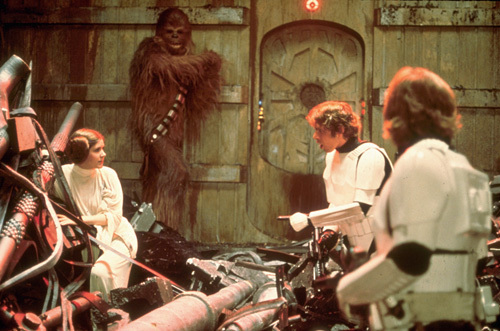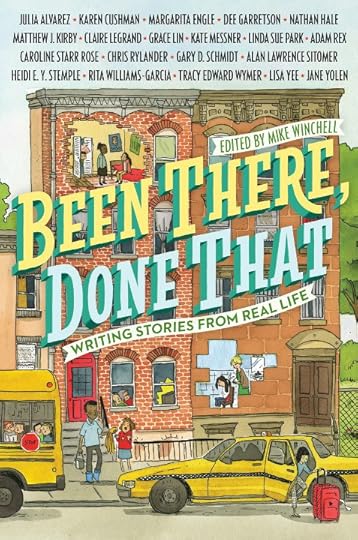Dee Garretson's Blog, page 6
April 17, 2017
STATION FOSAAN Book 1 of the Torch World Series is out now!
[image error]Scientists and their families stationed on the remote planet of Fosaan were promised a tropical vacation-like experience. But Fosaan, devastated from an apocalyptic event nearly three hundred years ago, is full of lethal predators and dangerous terrain. Earthers are forbidden to go beyond the safety zone of their settlement and must not engage the remaining reclusive Fosaanians, native to the planet. Sixteen-year-old Quinn Neen is about to do both of those things.
When Quinn discovers a beautiful Fosaanian girl named Mira stealing food from his family’s living unit, he hopes to convince her to help him explore the planet. But before he can convince her, scientists are taken captive, leaving Quinn and the other young Earthers at the mercy of space raiders and those who would bring Fosaan back to its former glory. Quinn must go from renegade to leader and convince Mira to become an ally in a fight against an enemy whose very existence threatens their lives and the future of Earthers stuck on Fosaan and at home.


February 15, 2017
Just trying something out here-more later
October 13, 2016
10 YA and MG books about Children living in the shadow of Elections, Politics and Presidential Parents
Every election season reminds us that it isn’t just the candidates running for office who are put in the media spotlight. The families come under scrutiny as well. And their lives will never be the same no matter what the outcome, especially those of the children and teens. I wrote WILDFIRE RUN because I wanted to tell an adventure story set at Camp David about a character who in ordinary circumstances would be an ordinary boy, but because his father is president, nothing is ordinary at all. And now that the election is over, we are seeing how Donald Trump’s youngest son Barron will now be thrust into a spotlight he probably never imagined.
To explore what those lives might be like, Here’s a list of ten books about political kids, and below that, descriptions of each book. The first five are more middle grade, though most of them would be enjoyed by YA readers as well. The last five fit in the YA category.
FIRST DAUGHTER: WHITE HOUSE RULES by Mitali Perkins Young
THE KID WHO RAN FOR PRESIDENT by Dan Gutman
WHEN AUDREY MET ALICE by Rebecca Behrens
THE PRESIDENT’S DAUGHTER by Kimberly Brubaker Bradley
WILDFIRE RUN by Dee Garretson
CONFESSIONS OF A FIRST DAUGHTER by Cassidy Calloway
MY LIFE NEXT DOOR by Huntley Fitzpatrick
RED GIRL BLUE BOY by Lauren Baratz-Logsted
THE WRONG SIDE OF RIGHT by Jean Marie Thorn
ZERO DAY by Jan Gangsei
[image error]FIRST DAUGHTER WHITE HOUSE RULES
In First Daughter: Extreme American Makeover, Sameera showed the United States it was ready for a Pakistani-born First Daughter. With her brains and bravado, she helped her dad win the presidential election. Now she’s living in the White House. Fabulous! Right? Actually, it’s no fairy tale. The Secret Service and the paparazzi follow Sameera everywhere. She misses her friends—and even her school—back home. So Sameera decides to escape. Will she be able to pull it off, or will her plan backfire on the entire First Family?
[image error]THE KID WHO RAN FOR PRESIDENT
“Hi! My name is Judson Moon. I’m 12 years old and I’m running for President of the YOU-nited States.”
So begins this fast-paced, funny, and surprising account of a boy’s run for the Oval Office in the year 2000. Under the tutelage of Lane, his brainy friend and self-appointed campaign manager, the affable sixth-grader from Madison, Wisconsin, takes on the Democrats and Republicans as a Third Party candidate who can make waves. “Grown-ups have had the last one thousand years to mess up the world,” Judd tells a reporter. “Now it’s our turn.”
[image error]WHEN AUDREY MET ALICE by Rebecca Behrens
Living in the White House is like being permanently grounded. Only with better security.
First Daughter Audrey Rhodes can’t wait for the party she has planned. The decorations are all set and the pizza is on its way. But the Secret Service must be out to ruin her life, because they cancel at the last minute, squashing Audrey’s chances for making any new friends. What good is having your own bowling alley if you don’t have anyone to play with?
Audrey is ready to give up and spend the next four years totally friendless–until she discovers Alice Roosevelt’s hidden diary. The former First Daughter’s outrageous antics give Audrey a ton of ideas for having fun…and get her into more trouble than she can handle.
[image error]THE PRESIDENT’S DAUGHTER by Kimberly Brubaker Bradley
ETHEL IS 10 YEARS OLD in 1901 when her family’s life changed forever. Suddenly, Father is not only a famous cowboy, war hero, and politician, but also President Theodore Roosevelt, leader of the United States—and Ethel has a new place to call home. The White House is older and stuffier than Ethel imagined, but there’s never a dull moment with her adventurous family around. Ethel would love to spend every day following Father on horseback rides and scrambles through neighboring Rock Creek Park.
Instead, Ethel has to stay at boarding school during the week, where nothing she does feels right and none of the girls seem to like her. Ethel’s parents keep telling her to keep her chin up and be patient, but it’s not easy being the president’s daughter. Ethel wishes she could be as courageous as father and make her family proud. When her fashionable older sister arrives home, Ethel feels new hope. Sister knows the secret of being brave and making friends, and she’s willing to share it. All Ethel needs to do is take one outrageous dare.
[image error]WILDFIRE RUN by Dee Garretson
The president’s retreat, Camp David, is one of the safest places in the United States. So why can’t the President’s son, Luke, and his friends Theo and Callie stay there without Secret Service agents constantly hovering over them, watching their every move? And yet, when an earthquake sets off a raging wildfire, causing a chain reaction that wreaks havoc at Camp David, they are suddenly on their own.
Now Luke needs a plan:
To override the security systems
To save those who were supposed to save him
To get through an impassable gate
To escape Camp David
[image error]CONFESSIONS OF A FIRST DAUGHTER by Cassidy Calloway
Morgan is so over being first daughter.
Morgan Abbott has no social life and no privacy, and her one major talent is screwing things up. Unfortunately for Morgan, every mistake makes front page headlines—because her mom is the president of the United States. To top it all off, she’s been assigned a brainiac secret service agent who’s barely older than she is and won’t let her out of his sight (never mind that he’s kind of cute). Torture!
But when her mom has to slip away on secret business and needs a decoy to cover for her, Morgan is the only one who can help. With a bit of makeup, a little ingenuity, and a lot of family resemblance, Morgan soon has everyone calling her “Madam President.” Can she pull it off? Or will she mess everything up . . . again?
[image error]MY LIFE NEXT DOOR by Huntley Fitzpatrick
“One thing my mother never knew, and would disapprove of most of all, was that I watched the Garretts. All the time.”
The Garretts are everything the Reeds are not. Loud, numerous, messy, affectionate. And every day from her balcony perch, seventeen-year-old Samantha Reed, daughter of a U.S. senator, wishes she was one of them . . . until one summer evening, Jase Garrett climbs her terrace and changes everything. As the two fall fiercely in love, Jase’s family makes Samantha one of their own. Then in an instant, the bottom drops out of her world and she is suddenly faced with an impossible decision. Which perfect family will save her? Or is it time she saved herself?
[image error]RED GIRL BLUE BOY BY Lauren Baratz-Logsted
Sixteen-year-old Katie and Drew really shouldn’t get along. After all, her father is the Republican nominee for President of the United States while his mother is at the top of the Democratic ticket. But when Katie and Drew are thrown together in a joint interview on a morning talk show, they can’t ignore the chemistry between them. With an entire nation tuned into and taking sides in your parents’ fight, and the knowledge that–ultimately–someone has to lose, how can you fall in love with the one person you’re supposed to hate?
[image error]THE WRONG SIDE OF RIGHT by Jean Marie Thorne
Kate Quinn’s mom died last year, leaving Kate parentless and reeling. So when the unexpected shows up in her living room, Kate must confront another reality she never thought possible—or thought of at all. Kate does have a father. He’s a powerful politician. And he’s running for U.S. President. Suddenly, Kate’s moving in with a family she never knew she had, joining a campaign in support of a man she hardly knows, and falling for a rebellious boy who may not have the purest motives. This is Kate’s new life. But who is Kate? When what she truly believes flies in the face of the campaign’s talking points, she must decide. Does she turn to the family she barely knows, the boy she knows but doesn’t necessarily trust, or face a third, even scarier option?
[image error]ZERO DAY Jan Gangsei
Eight years ago, Addie Webster was the victim of the most notorious kidnapping of the decade. Addie vanished—and her high-profile parents were forced to move on. Mark Webster is now president of the United States, fighting to keep the oval office after a tumultuous first term. Then the unthinkable happens: the president’s daughter resurfaces. Addie is brought back into her family’s fold, but who is this sixteen-year-old girl with a quiet, burning intelligence now living in the White House? There are those in the president’s political circle who find her timely return suspicious. When a national security advisor approaches Darrow Fergusson, Addie’s childhood best friend and the son of the president’s chief of staff, he doesn’t know what to think. How could the girl he’s missed for all these years be a threat to national security? Still, at the risk of having his own secrets exposed, Darrow agrees to spy on Addie. He soon realizes that his old friend is much more than the traumatized victim of a sick political fringe group. Addie has come with a mission…but will she choose to complete it?
Enjoy!


10 YA and MG books about living in the shadow of Elections, Politics and Presidential Parents
Every election season reminds us that it isn’t just the candidates running for office who are put in the media spotlight. The families come under scrutiny as well. And their lives will never be the same no matter what the outcome, especially those of the children and teens. I wrote WILDFIRE RUN because I wanted to tell an adventure story set at Camp David about a character who in ordinary circumstances would be an ordinary kid, but because his father is president, nothing is ordinary at all.
To explore what those lives might be like, Here’s a list of ten books about political kids, and below that, descriptions of each book. The first five are more middle grade, though most of them would be enjoyed by YA readers as well. The last five fit in the YA category.
FIRST DAUGHTER: WHITE HOUSE RULES by Mitali Perkins Young
THE KID WHO RAN FOR PRESIDENT by Dan Gutman
WHEN AUDREY MET ALICE by Rebecca Behrens
THE PRESIDENT’S DAUGHTER by Kimberly Brubaker Bradley
WILDFIRE RUN by Dee Garretson
CONFESSIONS OF A FIRST DAUGHTER by Cassidy Calloway
MY LIFE NEXT DOOR by Huntley Fitzpatrick
RED GIRL BLUE BOY by Lauren Baratz-Logsted
THE WRONG SIDE OF RIGHT by Jean Marie Thorn
ZERO DAY by Jan Gangsei
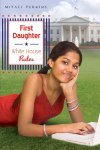 FIRST DAUGHTER WHITE HOUSE RULES
FIRST DAUGHTER WHITE HOUSE RULES
In First Daughter: Extreme American Makeover, Sameera showed the United States it was ready for a Pakistani-born First Daughter. With her brains and bravado, she helped her dad win the presidential election. Now she’s living in the White House. Fabulous! Right? Actually, it’s no fairy tale. The Secret Service and the paparazzi follow Sameera everywhere. She misses her friends—and even her school—back home. So Sameera decides to escape. Will she be able to pull it off, or will her plan backfire on the entire First Family?
“Hi! My name is Judson Moon. I’m 12 years old and I’m running for President of the YOU-nited States.”
So begins this fast-paced, funny, and surprising account of a boy’s run for the Oval Office in the year 2000. Under the tutelage of Lane, his brainy friend and self-appointed campaign manager, the affable sixth-grader from Madison, Wisconsin, takes on the Democrats and Republicans as a Third Party candidate who can make waves. “Grown-ups have had the last one thousand years to mess up the world,” Judd tells a reporter. “Now it’s our turn.”
 WHEN AUDREY MET ALICE by Rebecca Behrens
WHEN AUDREY MET ALICE by Rebecca Behrens
Living in the White House is like being permanently grounded. Only with better security.
First Daughter Audrey Rhodes can’t wait for the party she has planned. The decorations are all set and the pizza is on its way. But the Secret Service must be out to ruin her life, because they cancel at the last minute, squashing Audrey’s chances for making any new friends. What good is having your own bowling alley if you don’t have anyone to play with?
Audrey is ready to give up and spend the next four years totally friendless–until she discovers Alice Roosevelt’s hidden diary. The former First Daughter’s outrageous antics give Audrey a ton of ideas for having fun…and get her into more trouble than she can handle.
 THE PRESIDENT’S DAUGHTER by Kimberly Brubaker Bradley
THE PRESIDENT’S DAUGHTER by Kimberly Brubaker Bradley
ETHEL IS 10 YEARS OLD in 1901 when her family’s life changed forever. Suddenly, Father is not only a famous cowboy, war hero, and politician, but also President Theodore Roosevelt, leader of the United States—and Ethel has a new place to call home. The White House is older and stuffier than Ethel imagined, but there’s never a dull moment with her adventurous family around. Ethel would love to spend every day following Father on horseback rides and scrambles through neighboring Rock Creek Park.
Instead, Ethel has to stay at boarding school during the week, where nothing she does feels right and none of the girls seem to like her. Ethel’s parents keep telling her to keep her chin up and be patient, but it’s not easy being the president’s daughter. Ethel wishes she could be as courageous as father and make her family proud. When her fashionable older sister arrives home, Ethel feels new hope. Sister knows the secret of being brave and making friends, and she’s willing to share it. All Ethel needs to do is take one outrageous dare.
The president’s retreat, Camp David, is one of the safest places in the United States. So why can’t the President’s son, Luke, and his friends Theo and Callie stay there without Secret Service agents constantly hovering over them, watching their every move? And yet, when an earthquake sets off a raging wildfire, causing a chain reaction that wreaks havoc at Camp David, they are suddenly on their own.
Now Luke needs a plan:
To override the security systems
To save those who were supposed to save him
To get through an impassable gate
To escape Camp David
 CONFESSIONS OF A FIRST DAUGHTER by Cassidy Calloway
CONFESSIONS OF A FIRST DAUGHTER by Cassidy Calloway
Morgan is so over being first daughter.
Morgan Abbott has no social life and no privacy, and her one major talent is screwing things up. Unfortunately for Morgan, every mistake makes front page headlines—because her mom is the president of the United States. To top it all off, she’s been assigned a brainiac secret service agent who’s barely older than she is and won’t let her out of his sight (never mind that he’s kind of cute). Torture!
But when her mom has to slip away on secret business and needs a decoy to cover for her, Morgan is the only one who can help. With a bit of makeup, a little ingenuity, and a lot of family resemblance, Morgan soon has everyone calling her “Madam President.” Can she pull it off? Or will she mess everything up . . . again?
 MY LIFE NEXT DOOR by Huntley Fitzpatrick
MY LIFE NEXT DOOR by Huntley Fitzpatrick
“One thing my mother never knew, and would disapprove of most of all, was that I watched the Garretts. All the time.”
The Garretts are everything the Reeds are not. Loud, numerous, messy, affectionate. And every day from her balcony perch, seventeen-year-old Samantha Reed, daughter of a U.S. senator, wishes she was one of them . . . until one summer evening, Jase Garrett climbs her terrace and changes everything. As the two fall fiercely in love, Jase’s family makes Samantha one of their own. Then in an instant, the bottom drops out of her world and she is suddenly faced with an impossible decision. Which perfect family will save her? Or is it time she saved herself?
 RED GIRL BLUE BOY BY Lauren Baratz-Logsted
RED GIRL BLUE BOY BY Lauren Baratz-Logsted
Sixteen-year-old Katie and Drew really shouldn’t get along. After all, her father is the Republican nominee for President of the United States while his mother is at the top of the Democratic ticket. But when Katie and Drew are thrown together in a joint interview on a morning talk show, they can’t ignore the chemistry between them. With an entire nation tuned into and taking sides in your parents’ fight, and the knowledge that–ultimately–someone has to lose, how can you fall in love with the one person you’re supposed to hate?
 THE WRONG SIDE OF RIGHT by Jean Marie Thorne
THE WRONG SIDE OF RIGHT by Jean Marie Thorne
Kate Quinn’s mom died last year, leaving Kate parentless and reeling. So when the unexpected shows up in her living room, Kate must confront another reality she never thought possible—or thought of at all. Kate does have a father. He’s a powerful politician. And he’s running for U.S. President. Suddenly, Kate’s moving in with a family she never knew she had, joining a campaign in support of a man she hardly knows, and falling for a rebellious boy who may not have the purest motives. This is Kate’s new life. But who is Kate? When what she truly believes flies in the face of the campaign’s talking points, she must decide. Does she turn to the family she barely knows, the boy she knows but doesn’t necessarily trust, or face a third, even scarier option?
Eight years ago, Addie Webster was the victim of the most notorious kidnapping of the decade. Addie vanished—and her high-profile parents were forced to move on. Mark Webster is now president of the United States, fighting to keep the oval office after a tumultuous first term. Then the unthinkable happens: the president’s daughter resurfaces. Addie is brought back into her family’s fold, but who is this sixteen-year-old girl with a quiet, burning intelligence now living in the White House? There are those in the president’s political circle who find her timely return suspicious. When a national security advisor approaches Darrow Fergusson, Addie’s childhood best friend and the son of the president’s chief of staff, he doesn’t know what to think. How could the girl he’s missed for all these years be a threat to national security? Still, at the risk of having his own secrets exposed, Darrow agrees to spy on Addie. He soon realizes that his old friend is much more than the traumatized victim of a sick political fringe group. Addie has come with a mission…but will she choose to complete it?
Enjoy!


March 6, 2016
One More Amelia Peabody Mystery ?!
*Exciting News*

Barbara Mertz, who published mysteries and romantic suspense stories under the pen names of Elizabeth Peters and Barbara Michaels, passed away in 2013. She was one of my favorite authors and I looked forward to each new book of hers, especially the ones that featured intrepid archaeologist Amelia Peabody. Back in 2012, I posted about the news that she had another Amelia Peabody book in the works. I know I joined her fans everywhere in the wait for this book. It was not finished at the time of her passing, and most of us thought we’d never see her last work.
I hadn’t heard anything about the book until last week, when I was delighted to get an email from Ms. Mertz’ family company, which is managing her literary estate:
“I just wanted to let people know about some recent developments: The crew at mpmmanor, Barbara’s family company, is continuing to post on her books and any related news. The best guess right now is that if the final A Peabody novel is going to appear, it won’t be before 2017. But hopes run high that this may happen yet. News and remembrances are posted on the blog rememberingbarbaramertz@wordpress.com, as well as on twitter, with occasional tumblr and facebook posts as well, and now a little bit on instagram. All the contact information is on mpmmanor.wordpress.com . The official webpage has encountered some problems and is not being updated, but hopefully this will change soon. Hope that helps! So happy to read this conversation!!!”
This is great news! I’ll post if I hear more. If any fans out there want to follow the company on twitter, the handle is @MPMManor.
And here’s my original post, including a listing of the Amelia Peabody books in chronological order. (the best way to read them!)
I was very happy to read that Elizabeth Peters (Barbara Mertz) is at work on another Amelia Peabody mystery. The series ranks as one of my top four mystery series, those that I read over and over. According to the information on her website, the book has a working title of THE PAINTED QUEEN, and Ms. Peters says she hopes to turn in the manuscript this spring. If we are lucky, that means fans might see the book in 2013!
The new story is set during the 1912-1913 season. I find that time period fascinating, and suspect there will be many new fans of these books, as the popularity of Downton Abbey is raising interest in existing books about those pre-World War II years and the war years as well.
If you are not familiar with the series and want to try them, they are best read in chronological order. They were not all published in order though, so don’t go by the dates of publication. The books span the time period from 1884-1923 and follow Amelia and her family on their excavations in Egypt with a few side adventures in other countries. If you have only read some of the earlier books, I’d encourage you to read the later ones, when Amelia’s son Ramses begins to play a larger role in the books. His character goes from a precocious, somewhat annoying little boy to one of the more romantic Indiana Jones-type characters in modern fiction. Ms. Peters’ portrayal of him inspired me to try to create my own intriguing hero in the Victorian-era mysteries I write.
Here’s the list of Amelia Peabody books in order of time period:
Crocodile on the Sandbank (1884-1885)
Curse of the Pharaohs (1892-1893)
The Mummy Case (1894-1895)
Lion in the Valley (1895-1896)
Deeds of the Disturber (1896)
The Last Camel Died at Noon (1897-1898)
The Snake, the Crocodile, and the Dog (1898-1899)
The Hippopotamus Pool (1899-1900)
Seeing a Large Cat (1903-1904)
The Ape Who Guards the Balance (1906-1907)
Guardian of the Horizon (1907-1908)
A River in the Sky (1910)
The Falcon at the Portal (1911-1912)
He Shall Thunder in the Sky (1914-1915)
Lord of the Silent (1915-1916)
The Golden One (1916-1917)
Children of the Storm (1919-1920)
Serpent on the Crown (1921-1922)
Tomb of the Golden Bird (1922-1923)
I hope we can soon add a new book to the list!


March 5, 2016
Farewell Downton Abbey – Viewing Party Recipes
I am very sad Downton Abbey is ending, but I have learned so much from watching it. I’ve been curious about every aspect of the time period, from fashion to the political situation of the day. I am also very interested in the food they served, because as a writer, I’ve found including details about food, tastes and dining habits is a good way to draw a reader into a story.
So for the last show, and for future viewings on DVD, I’ve posted some recipes that can be used for a Downton Abbey viewing party. I have been perusing cookbooks published during the time in which Downton Abbey is set to get an idea of the food, and to consider what I could cook that would be something the Crawleys themselves might have tasted, particularly at a late night supper (Downton Abbey viewing time where I live.) The lack of footmen and a butler at our house caused me to focus on relatively simple dishes, as my husband is not amenable to put on a tailcoat to pretend to be Mr. Carson serving dinner.
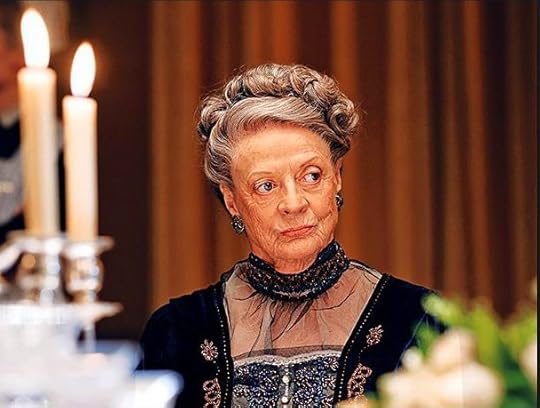
February 26, 2016
It’s a Book Deal!
I’m delighted to announce that the first book in my young adult science fiction trilogy will be published by Month9 Books in April 2017.
It’s been one of my dreams to publish science fiction stories. I love all kinds of adventure stories, but science fiction has long been one of my favorite genres. My brother got me hooked on it when I was in 5th grade. I’ve been a fan ever since. In science fiction, a writer can explore all sorts of ideas about culture and society outside the constraints of a real life setting.
I started this story back in January of 2010, sandwiching in writing time while I was also writing WOLF STORM. At that time, there was virtually no demand in the publishing world for kidlit science fiction, so I wrote it hoping someday things would turn around. Writers out there will know what I mean when I say sometimes stories just have to be written even if it seems no one is encouraging you to write them.
So here’s a description of the story:
Beware history written by either the conquerors or the conquered.
Life on the remote planet of Fosaan is supposed to be like a tropical vacation for the families of the Earth scientists assigned to the secret research facility orbiting above the planet. Sixteen-year-old Quinn Neen’s time there will be short-he is supposed to report for military training in the officer corps when he turns seventeen. But Quinn has other plans. Terrible at taking orders and following rules, Quinn knows he’s not officer material, so he hopes his exploration of the planet will pave his way into the one branch of the military where he might succeed, the reconnaissance patrol. Only problem, Earthers are forbidden to go beyond the safety zone of their settlement because of the dangerous predators, lethal terrain and the secretive indigenous Fosaanian people. Quinn isn’t going to let that stop him, but he’s smart enough not to blunder off into the jungle on his own.
When Quinn discovers a beautiful Fosaanian girl named Mira stealing food from his family’s living unit, he decides she would be the perfect guide for his explorations. Before he can win her over to his idea, the idyllic situation on the planet turns into a nightmare. Nothing is what it seems, either on the planet or on the space station. When all the Earthers under eighteen become expendable, Quinn must come up with a way to save them, but that means he has to decide if he can trust Mira with his life and the lives of everyone he cares about.
*stay tuned for book 2!


January 26, 2016
Before You Publish Your Book, Write Yourself A Bad Review
 I don’t mean write a review to put up on Amazon or Goodreads. I mean sit down and really think about what other readers will not like in your story. If you read that last sentence and you’re thinking to yourself, I don’t need to do that. Everyone will love my story. I love my story. My beta readers love my story. Stop. Even if you and your beta readers think your story is ready to be out in the world, still take the time to write that bad review. Doing this will save you much grief in the long run and will make you a better writer.
I don’t mean write a review to put up on Amazon or Goodreads. I mean sit down and really think about what other readers will not like in your story. If you read that last sentence and you’re thinking to yourself, I don’t need to do that. Everyone will love my story. I love my story. My beta readers love my story. Stop. Even if you and your beta readers think your story is ready to be out in the world, still take the time to write that bad review. Doing this will save you much grief in the long run and will make you a better writer.
Intellectually, we can accept that not everyone will like our books. We talk about it with other writers. We joke about putting our worst reviews on tee shirts and wearing them proudly. One of mine would say “Mostly harmless MacGyver-esque foolishness.” I actually love this, because yes, there was a lot of MacGyver influence in that book. Foolish is in the eye of the beholder.
So we tell ourselves we don’t care about reviews and we try to quiet the little Trumpish ego voice inside us that whispers we won’t get many negative ones because we are amazing and people should throw rose petals at us everywhere we go. Never mind that most of us writers sit around by ourselves in our pajamas so we are unlikely to be anywhere near adoring rose petal-throwing fans. Or we tell ourselves that anyone who doesn’t like our stories are just clueless or they hate everything or _________ (fill in the blank.)
When the first scathing review or even minor criticism hits, we are gobsmacked. (Love that word. It comes from “gob” which is supposedly “mouth” in Irish / Scottish Gaelic.)
Back to the writing of a bad review. I’ve read many books I hated. A few I’ve really, really hated. In analyzing why I’ve loathed certain books, I’ve begun to see why other people might hate my own. The most recent book I did not finish was a popular fantasy book, beloved by many. To me, it was so wordy and overwrought with purple description, I fought the urge to ransack my bookshelves for some Hemingway to cleanse my palate.
If you put long descriptions in your stories, certain readers will love it. Others will write reviews about how the story dragged or how they skipped over certain parts or couldn’t finish. If you write fast-paced action-packed books, again you’ll have some readers who love it. Others will say there is no character development or the book was just a lightweight read not really worth their time or it was too fast for them to follow.
So critique your own books in terms of your style, but don’t stop there. Take a long hard look at that style. Are you actually too wordy? Or are you too overly focused on stark action? Read some popular books in your genre, especially the first few chapters of those books. If you have twice as much backstory or detail as a good detail-rich example, you’ve probably got too much. For the other extreme, read the first three chapters of a popular action-packed adventure, then ask yourself what you know about the characters and their world. Compare your own and see if it measures up or if you’ve just thrown in a bunch of plot points.
Do your characters actually seem like real people or are they some idealized version of who you’d like to know or be? Are they memorable enough? Reviewers concentrate much of their focus on characters. What can be said of yours?
Most important, know your flaws. I know my biggest flaws. I am bad at physical descriptions of characters. It’s something I continually struggle to improve. I also hate writing endings so I rush them. In writing children’s fiction, I struggle with wanting to write realistic stories versus how best to portray such things to young readers. In writing adult fiction, I struggle with my own impatience to get the story done. I have others, but that would take up too much room for me to list them all!
It’s easy to convince yourself readers won’t notice your flaws. Ha! So not true. I’d rather know in advance that someone is going to discuss in great detail my character’s flaws. If I put those flaws in on purpose, I won’t care what a reviewer said. If I didn’t intend them to be there, then that means I need to do a better job in the next story. There’s always the next story.
And if anyone is interested in MacGyver-esque foolishness, check out WILDFIRE RUN.


December 15, 2015
Ten Tips Writers can take from Star Wars
Even if you don’t like Star Wars, and I know a few people who don’t, it’s hard to ignore the fact that the first Star Wars movie created millions of fans, myself included. The photo above includes only a few of the Star Wars objects we have in our home. I’ve pretended I was buying them for my son, but now I can admit I love them too. I’ve been a fan of Star Wars for a long time and have learned much about storytelling and adventure fiction writing from watching the movies over and over. (I probably don’t need to specify I mean the original trilogy only. We don’t acknowledge the later three films at our house.) When I do school visits, I bring along an R2D2 as a reminder that emotions in stories can be conveyed many ways, not just through dialogue alone. I’m not saying there aren’t flaws in the movies, but here’s what they did right, and what writers can learn to make their stories into ones thata readers love:
Add in bits of humor.
Humor is not the first thing a person thinks of when it comes to Star Wars, but it’s a key component to appeal of the film. I’m not talking slapstick humor, but the little bits of dialogue that round out the characters as more than just action heroes. We may not remember every accurate hit on a tie fighter, but I bet most viewers remember the chess scene between R2 and Chewbacca along with C3PO’s comment, “I suggest a new strategy. R2. Let the Wookie win.”
Make your sidekicks out-of-the-ordinary.
Best friends and sidekicks are a staple in film, but often they are just there to avoid having the main character talk to themselves for the whole movie. Star Wars took the idea of a sidekick and went to the extreme, including two who speak languages the viewers can’t understand and turning the standard robot into a fretful fussbudget. (Note-It is possible to go too far in your quirky sidekicks. I’ll just say Jar Jar Binks and leave it at that.)
A touch of romance never hurts.
Many adventure stories go way too far in trying to add in romance in the middle of extreme danger. It’s completely unbelievable in movies and stories when a couple takes time out to gaze into each other’s eyes while they know a bomb or something is about to destroy everything, so the tiny hints of attraction between the characters in A New Hope are just enough to add a little interest.
A team is better than one lone hero.
Many readers and viewers want to identify with a character, so the more choices, the better. The interactions of an ensemble cast of characters can make most stories far more interesting than just one lone hero off to save humanity all by him or herself.
Characters’ flaws make them real and relatable.
There are some books where the main characters are so annoyingly good at everything that it would be refreshing to see them trip over their own feet once in a while. Perfect characters distance themselves from readers and viewers. Star Wars avoids that trap. Princess Leia was just enough like a bossy older sister to add in a touch of humanity to a member of planetary royalty. Luke, as naïve farmbook, was not your standard cool and collected young hero, and Han, preening in his scoundrelness, was refreshing in his ability to not take himself too seriously.
Make your bad guys more than just bad.
It’s obvious from his first appearance that Darth Vadar is one really bad dude. Being able to strangle someone without touching them is fairly extreme on the evil abilities scale, but once we get that he is the bad guy, we’re also teased that there is a bit more to Vadar than just “evil guy wants to rule the world” trope. We don’t get Vadar’s whole back story for a long time, but in the first movie, there are hints, particularly in the confrontation between Obi-Wan and Vadar, when he says, “I’ve been waiting for you, Obi-Wan. We meet again, at last. The circle is now complete. When I left you, I was but the learner; now I am the master.” That’s enough to make the viewer curious as to the backstory. It doesn’t take much and that’s a good thing to remember. In writing, you don’t want to infodump the antagonist’s whole miserable life on the reader right away, but hints here and there give some depth to the character.
Create a world readers want to visit.
I’m not much for dive bars in real life, but if I was ever in Tatooine, I’d make a beeline for the Mos Eisley cantina. Even the grittiest of worlds can pull on readers. It’s not like we want to live there forever, but compelling world building in your stories will make the readers long to explore, even if just for a couple of hours. It doesn’ teven have to be fantasy or futuristic worlds. Enough interesting details can convince a reader they really want to visit your story’s fictional town in North Dakota so they can order a mouthwatering cheeseburger at the equally fictional Bea’s Diner.
Get readers wondering what happens next by creating a string of mini roadblocks.
I’ve heard that building tension in a story works best using a stair step effect, where there are a series of hurdles to overcome that increase in seriousness and difficulty. A good example of this are the scenes on the star destroyer where Han and Luke are trying to rescue Leia. Each step forward leads them into new predicaments. It’s “Now What?” for viewers as we wait to see what happens next. When the characters jump into the garbage chute, you expect them to face something bad, and it comes when the creature pulls Luke under, but only a few seconds after he survives that encounter, they face being flattened as the walls move together. It’s a definite edge-of-seat moment.
Include a ticking clock.
Even if your story doesn’t involve your heroes being blown up in an explosion, there are ways to add in a ticking clock to solve the main problem. Adding a time limit where Bad Thing X will happen in your main character doesn’t solve Major Problem A helps to keep the pages turning.
Craft an ending that leaves readers wanting to follow the characters into the next part of their lives.
This may be the most important takeaway of all. So many times I hear readers say they hated the ending of a particular book, and that leaves them not wanting to read more by that author or to reread the book. Or even if they didn’t hate it, they just don’t care enough to feel much emotion for the story when it ends. Endings don’t have to be all happiness and light and unicorns, but I know I’m disappointed if I feel like the characters just sort of wander off into mundane ordinary life when I’ve closed the cover of a book.
If you are interested in other films that can inspire your writing, check out this post AIR FORCE ONE Thumbs Up, OLYMPUS HAS FALLEN, Thumbs Down: https://deegarretson.wordpress.com/20... on


March 10, 2015
Cover Reveal – BEEN THERE DONE THAT, coming 11/15 from Penguin/Grosset & Dunlap
Lots of writing news coming this year! First up, I am very excited to have my work included in a middle grade anthology, which I think will be great for teachers, homeschoolers and parents interested in encouraging their children���s creative writing: BEEN THERE, DONE THAT: Writing Stories from Real Life, edited by Teacher and Editor Extraordinaire Mike Winchell.
Here���s the description: ���Where do authors get their ideas? And how do they turn those ideas into stories? This anthology looks at the process of taking real-life experiences and turning them into works of engaging fiction. The collection features award-winning and bestselling middle-grade authors who provide both original fictional short stories as well as the nonfiction accounts that inspired them. The contributing authors include Julia Alvarez, Karen Cushman, Margarita Engle, Dee Garretson, Nathan Hale, Matthew Kirby, Claire Legrand, Grace Lin, Kate Messner, Linda Sue Park, Adam Rex, Gary Schmidt, Alan Sitomer, Caroline Starr Rose, Heidi Stemple, Rita Williams-Garcia, Tracy Edward Wymer, Lisa Yee, and Jane Yolen.���
For my Iowa friends and family, my nonfiction piece features my dog Kitty, who you may remember was not the best dog in the world. In fact, she was mostly untrainable, though I loved her anyway. :)




